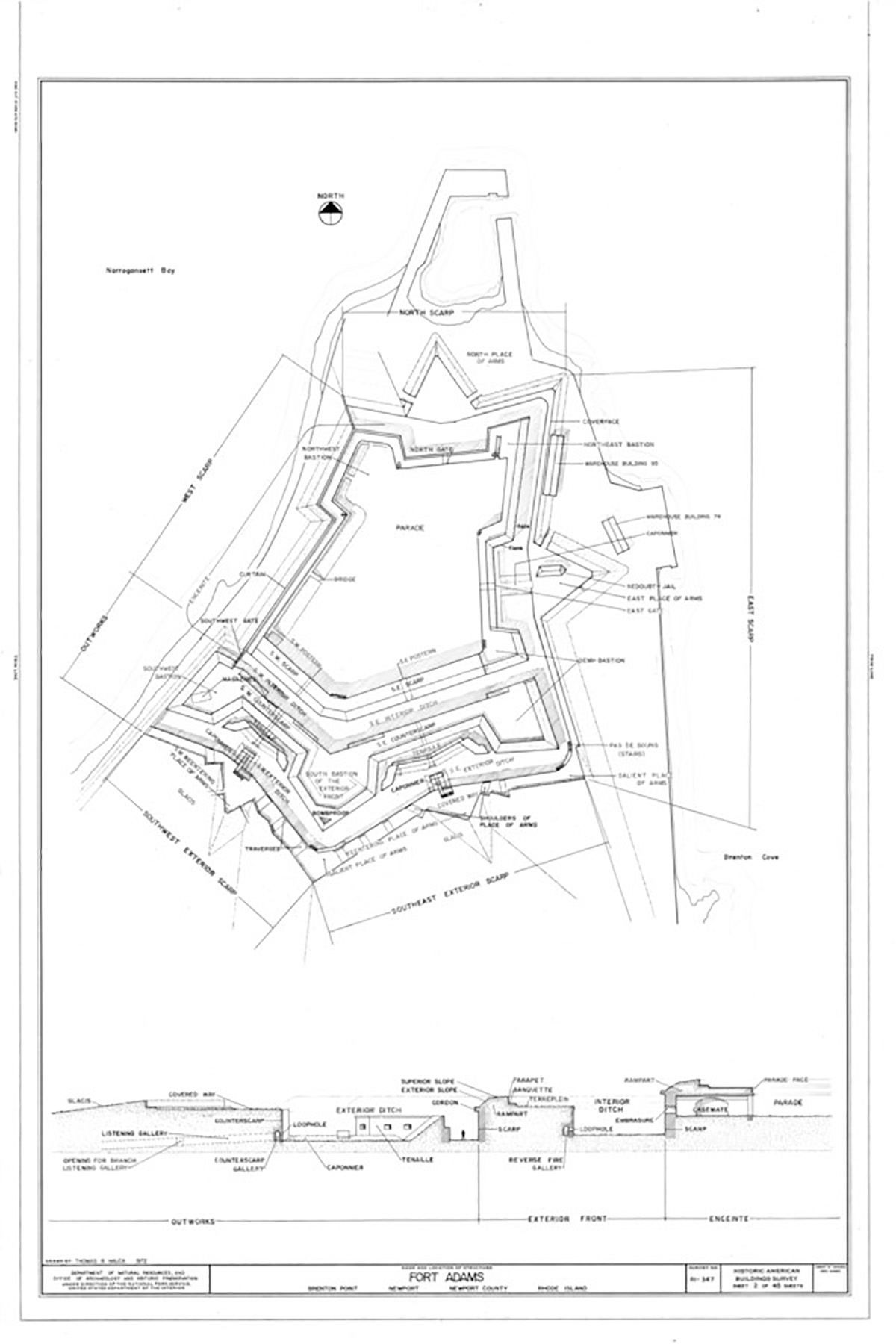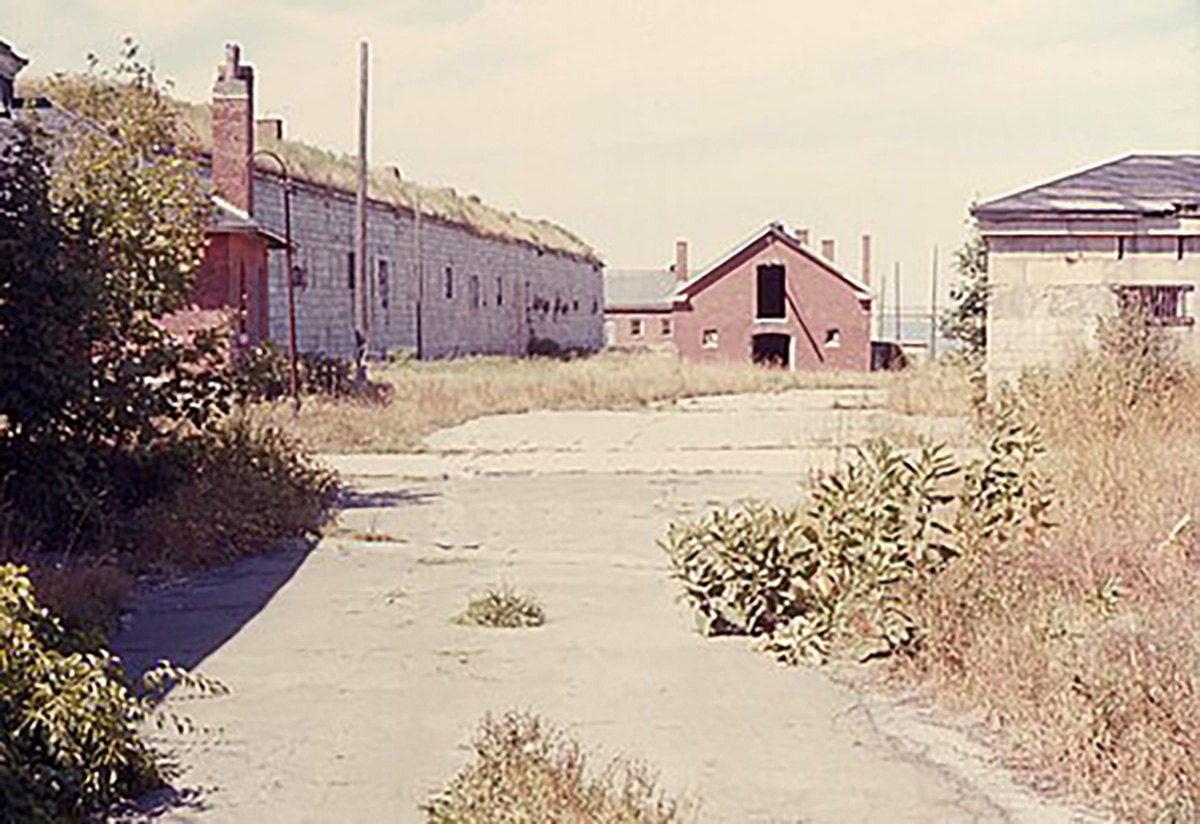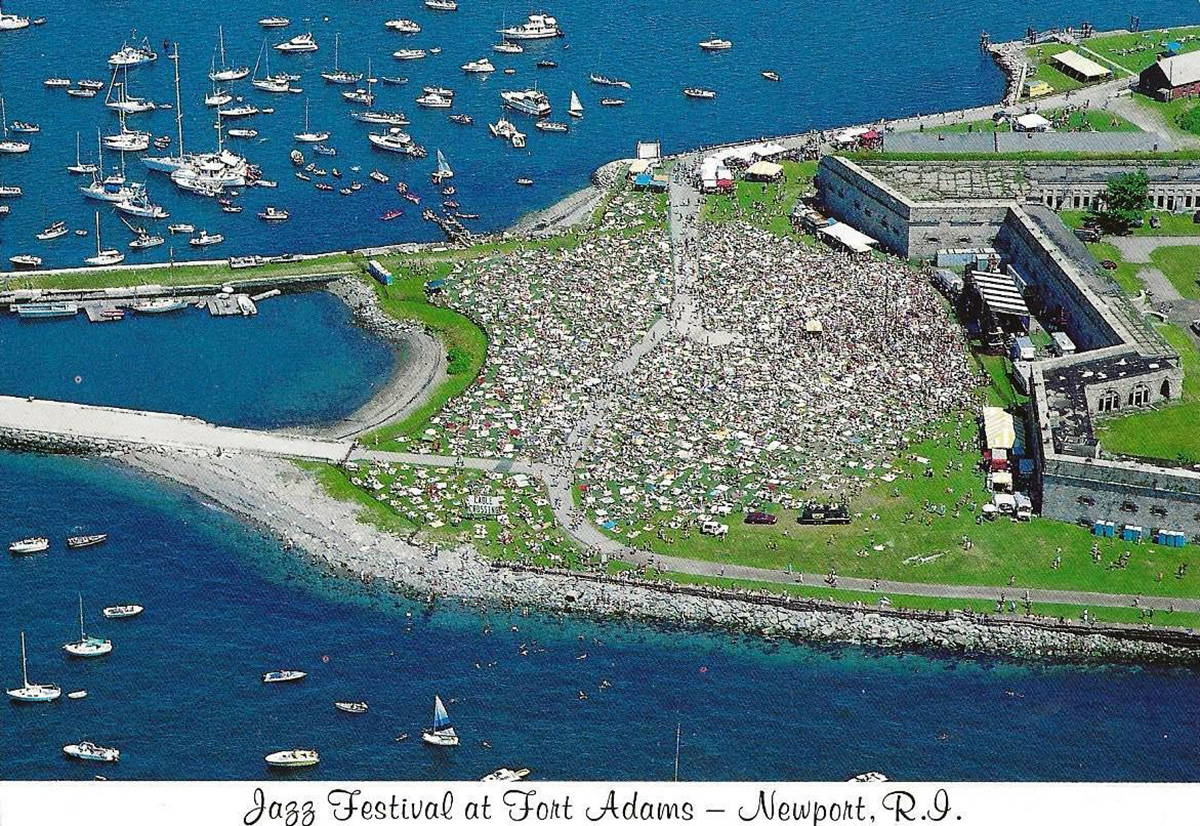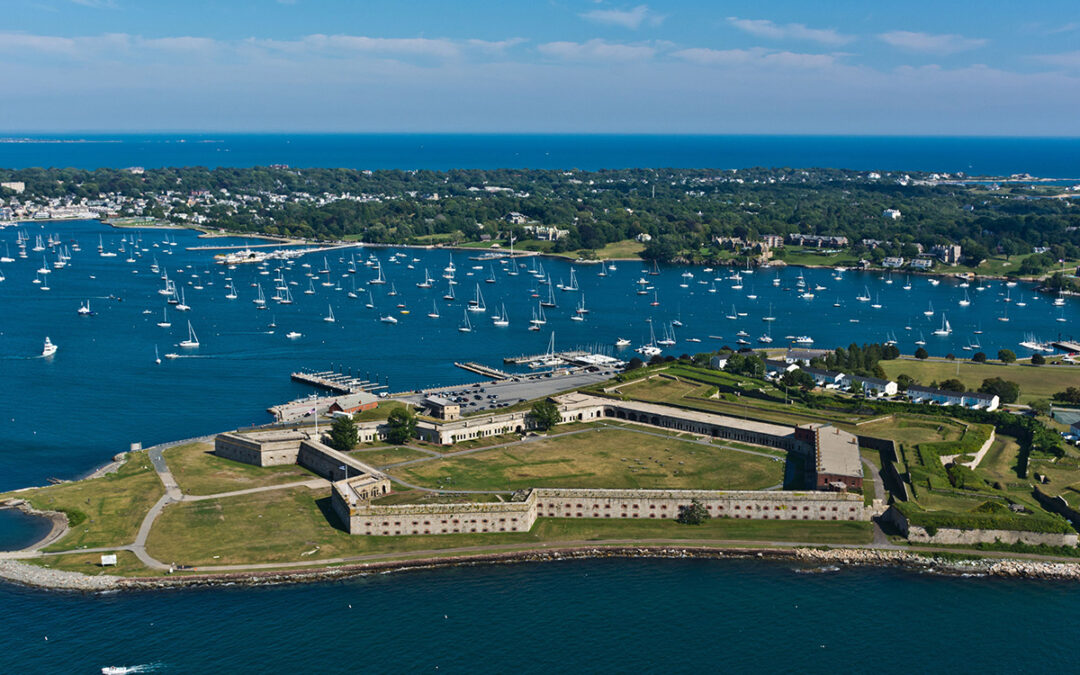Aerial view of Fort Adams
In the Colonial era, Newport was one of the most populous and prosperous cities in North America. It was a major deep-water port and a thriving shipping center. In December of 1776 the British Fleet sailed into Newport harbor and took possession of this this critical port until the French navy pushed them out in October of 1779. In that brief period, half of Newport’s population had fled and many hundreds of houses were destroyed. Following the Revolutionary War, the American government was fearful that the British or some other foreign invader might want to take possession of the Newport Harbor again.
To counteract this threat a major coastal fortification was to be constructed in 1799, to be called Fort Adams, named after the United States’ second president John Adams. The original structure was a small and primitive fortification, but in 1824, at the instruction of Congress, military engineer Joseph Totten undertook the redesign and expansion of the fortification. Built using the “Third System,” Fort Adams is Totten’s masterpiece of fortification design. Heavy, soil-filled ramparts conceal brick arched casements, where troops and armaments were housed. The structure was designed with 438 slots (embrasures) through which canons could be fired.
The plan is an elaborate pentagon, with projecting “bastions,” so that every wall face can be protected from another. The enormous project consumed Totten for 13 years, and he used the construction effort as an opportunity to train the first generation of American military engineers and to experiment with new armaments and design. Even though Totten left the Newport area in 1838 as he rose in the ranks, work on the project continued until 1857. Fort Adams is often cited as being one of the most sophisticated fortifications in the world for its time.

Map of Fort Adams
But even as the facility was being built, fortification design and armament was evolving faster. In 1820, when the new Fort Adams was first conceived, an 18-pound iron ball fired from a smooth-bore canon could travel only several hundred yards and with undependable accuracy. By the end of the construction of the fort, shells fired from rifled bores could travel far greater distances with greatly improved precision. By 1940, 16-inch shells could be fired more than 26 miles and the location of Fort Adams became irrelevant to American coastal protection and Fort Adams was allowed to deteriorate.
The fort, after more than 100 years of development and preparation for conflict, was retired without ever firing a single shot in combat. Although the fort itself was no longer necessary to protect the harbor, the soldiers and workers who came from Ireland and elsewhere to build the massive project were essential to supporting the town economically during a difficult period. The laborers’ skills were used to build such stone edifices as St. Mary’s Church on Spring Street.
In 1953 the Fort was transferred from the Army to the Navy and President Eisenhower made his summer home from in the former Commandant’s Quarters during the summers of 1958 and 1960, playing golf regularly on the nearby Newport Country Club links. Fort Adams is 105 acres in size, making it one of the largest fortifications in the United States. Its large size also made it a tremendous challenge to maintain and by the mid-1970’s the Fort had become largely deteriorated.

Fort Adams in disrepair
In 1981, George Wien, the founder of the Newport Jazz Festival and the Newport Folk Festival, looked at the multiple open spaces in and around the fortification and envisioned the perfect place to have multiple stages for musical performance and the festivals have been hosted at the Fort ever since, putting the structure in the spotlight for those two long weekends. To counteract the decay and loss of this important architectural and historical landmark, the Fort Adams Trust was founded in 1994 as a nonprofit organization, dedicated to stabilizing, restoring and operating Fort Adams as a historic site.
With the help of a “Save America’s Treasures” grant and contributions from private citizens, much has been accomplished, but much more needs to be done. A bond issue to help restore the structure was narrowly defeated in 2006 but succeeded when next brought to the voters in 2010. These monies have been used to help make the fort a suitable destination for the America’s Cup World series in 2012 and, most recently, as a stop for the Ocean Race in 2014, 2018 and 2023. In this capacity the venue outshone all expectations and many are hoping that the Ocean Race will continue to return to Newport in the future.

Newport Jazz Festival at Fort Adams
Now, as Fort Adams is looking to celebrate the two hundredth year since it began its redesign and expansion, it is still a central venue for numerous musical, sailing and other special events like parties, weddings, and civil war re-enactments. It is a magnificent structure with it roots in the Revolutionary War and a future firmly anchored to the hospitality industry that has become central to Newport’s and Rhode Island’s futures and is well worth a visit!
Ross Sinclair Cann, AIA is an author, historian, teacher and founder of A4 Architecture in Newport RI. Among many other boards, committees and commissions. He holds architectural degrees in both history and design for Yale, Cambridge and Columbia Universities.
